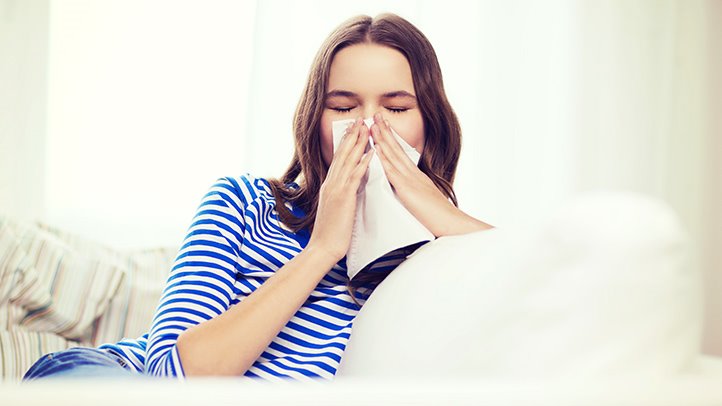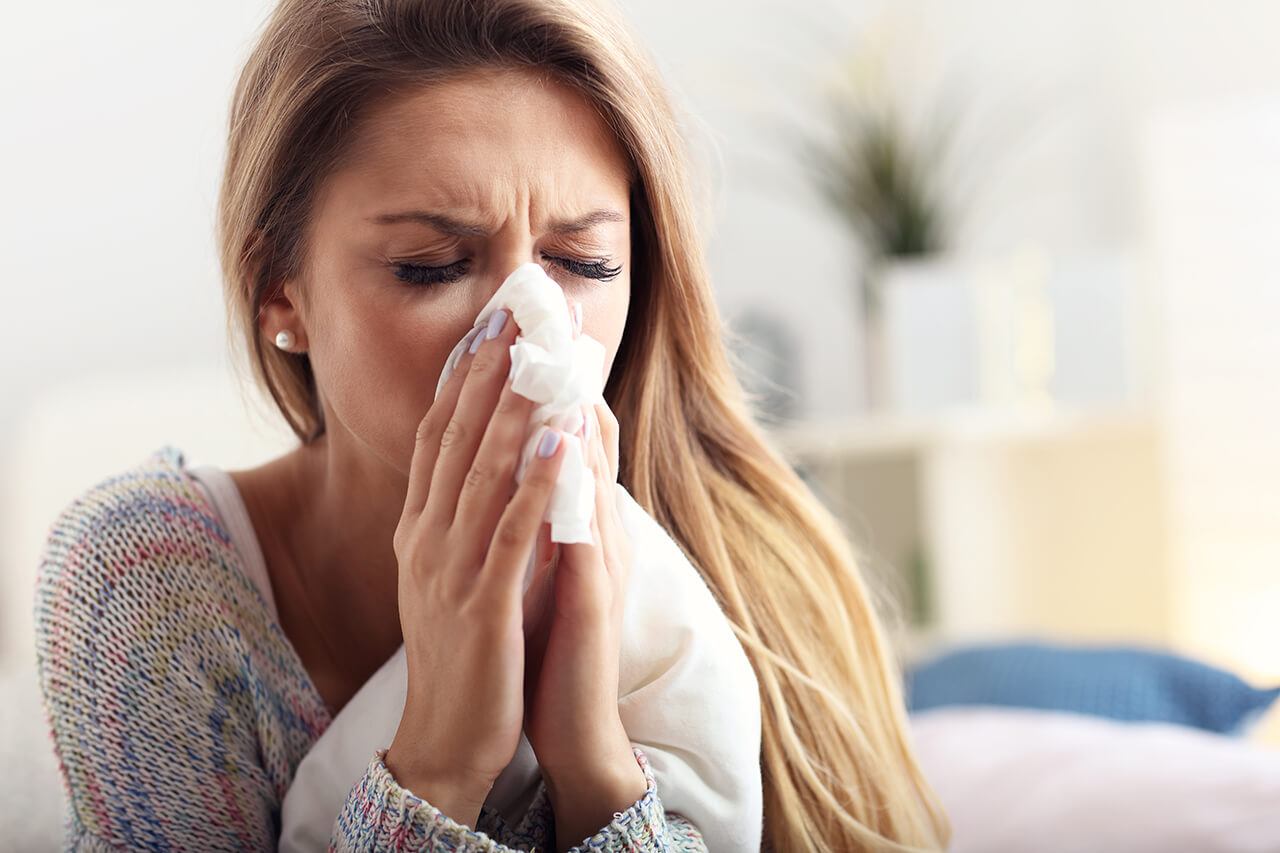Overview
Allergic rhinitis is a type of allergic reaction. It happens when your immune system overreacts to something in your environment.
In other words, your body reacts to an environmental trigger that’s generally harmless as though it were a threat, such as a virus.
The symptoms of allergic rhinitis often mimic those of a cold. For example, they can include:
- sneezing
- runny or stuffy nose
- itchy or watery eyes
- coughing
- headache
- fatigue
If you only experience allergic rhinitis during certain times of the year, you have “seasonal allergies” or “hay fever.” You’re probably allergic to outdoor triggers, such as pollen.
If you experience it year-round, you’re probably allergic to indoor triggers. Learn about the most common indoor triggers of year-round allergic rhinitis.
Pet dander
Dander is made up of tiny bits of dead skin that flake off of animals. It can be found in the air and on surfaces that come into contact with pets.
Because of it being of light weight and microscopic and having rough edges, dander easily sticks to clothing, furniture, and carpet. As a result, it’s easy to spread around an environment, such as your home.
Some types of pet dander are more likely to trigger allergic reactions than others. For example, cat allergies are about twice as common as dog allergies, according to the American Lung Association.
Plus, not all dog breeds are created equal for people with allergies.
Some “hypoallergenic” dog breeds may be less likely to trigger an allergic reaction.
The American Kennel Club (AKC) lists dogs with coats that don’t shed, such as poodles and schnauzers, as safer options for people with allergies.
Tips
If you’re allergic to pet dander but you want a pet, talk to your doctor. Ask them if certain animals or breeds would be safer for you.
If you already have a pet, take steps to cut down on dander in your environment. For example:
- Bathe your pet regularly.
- Vacuum flooring and furniture on a regular basis.
- Change and wash your bedding on a regular basis.
- Keep your pet off of furniture and out of your bedroom.
- Consider getting rid of carpet if you have it or at least vacuum and clean carpet and rugs regularly.
Mold
Mold is a class of fungus that grows in damp places. It can grow almost anywhere in the right conditions. For example, it often grows on or around:
- basements, garages, and sheds
- bathroom walls and flooring
- air conditioners
- refrigerators
If your house has poor ventilation and high levels of humidity, you’re more likely to have problems with mold.
Tips
To help prevent the growth of mold:
- Ventilate damp areas. For example, use bathroom exhaust fans while showering.
- Install a dehumidifier in areas that feel humid or smell musty. Make sure you clean the dehumidifier’s filters and coils regularly.
- Eliminate sources of excess moisture. For example, repair leaky pipes or shingles.
- Keep gutters and other drainage areas around your home clear.
If mold spreads across an area of your home that’s bigger than 10 square feet, consider hiring a professional to clean it up.
Dust mites
Dust mites are tiny bugs that live in household dust. They feed on human skin cells and moisture in the air. Their bodies, saliva, and feces also make up part of the dust and can trigger an allergic reaction.
Tips
To help keep dust mites away:
- Cover your mattresses and pillows with zippered plastic covers.
- Regularly wash all of your bedding and area rugs in hot water.
- Replace carpet in your home with tile or wood floors.
- Use hard window coverings, such as blinds, rather than curtains.
- Vacuum your home on a regular basis. Invest in a vacuum cleaner with a high-efficiency particulate air (HEPA) filter and follow the manufacturer’s instructions for cleaning or replacing it on a regular basis.
Cockroaches
Some insects, particularly cockroaches, can trigger allergic reactions.
If there are cockroaches in your home or workplace, you can inhale their feces, saliva, and tiny particles from their bodies, like any other allergy trigger.
Cockroaches are notoriously hardy and difficult to get rid of. They thrive in almost any condition, but they prefer areas with lots of moisture and food available.
Tips
To help prevent an infestation:
- Don’t leave human or pet food out.
- Cover your trash cans, clean your dishes, and clean up food crumbs immediately.
- Seal cracks in your walls and floors, where cockroaches could enter an environment.
- Fix or clean up sources of excess moisture.
- Use cockroach baits and traps to kill them.
- Have an exterminator spray regularly.
Prevention
If you have allergic rhinitis, avoiding your triggers is an important part of managing your allergy symptoms.
If you don’t know what’s triggering your allergic reactions, talk to your doctor. They can refer you to an allergist for testing. Once you’ve identified the cause of your symptoms, you can take steps to avoid it.
You can limit many indoor allergy triggers by keeping your home clean and well-maintained. For example, vacuum your floors and furniture, clean your upholstery, and change your bedding regularly.
Repairing leaks and other sources of excess moisture can also help you cut down on many indoor allergy triggers.





